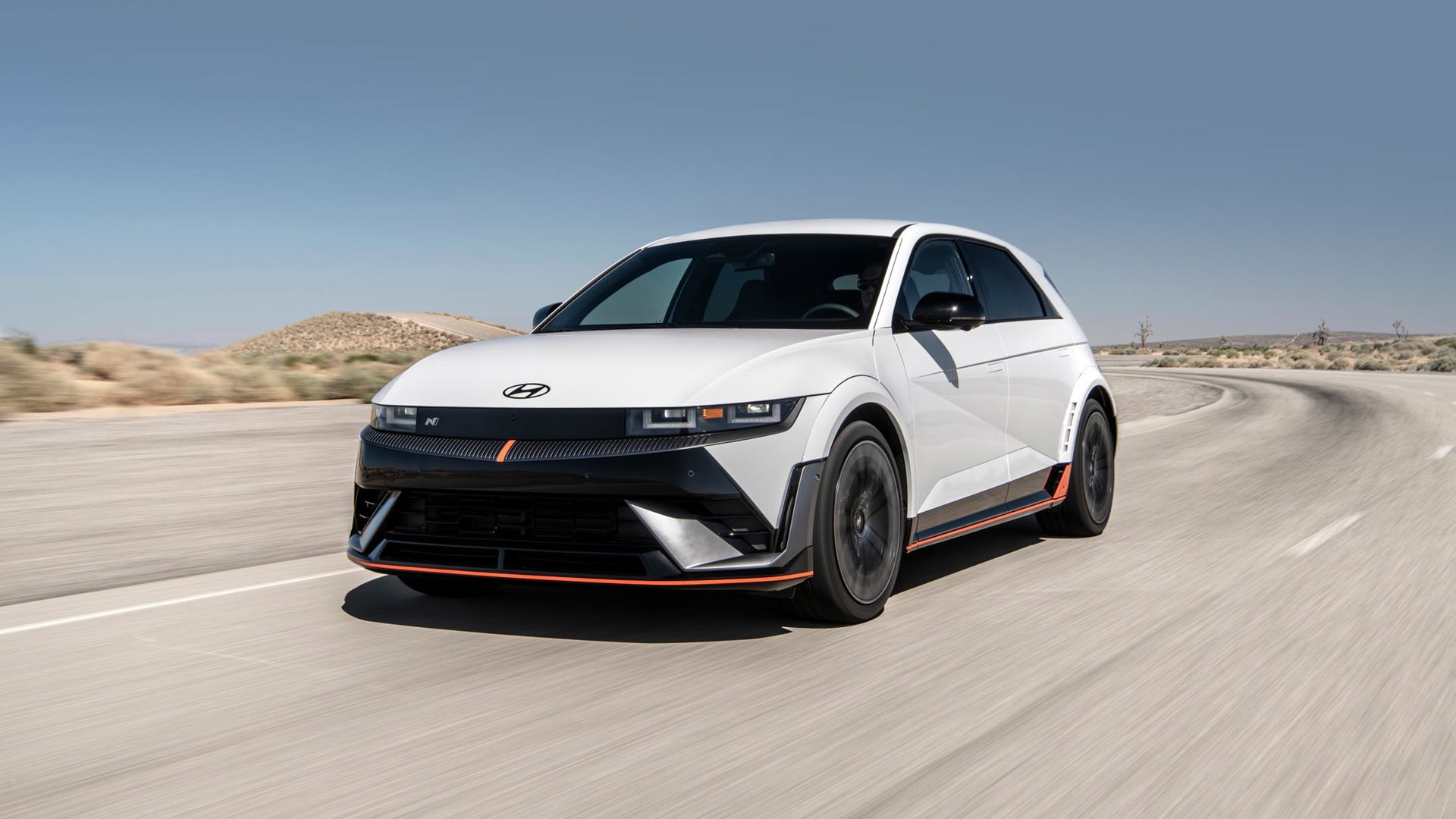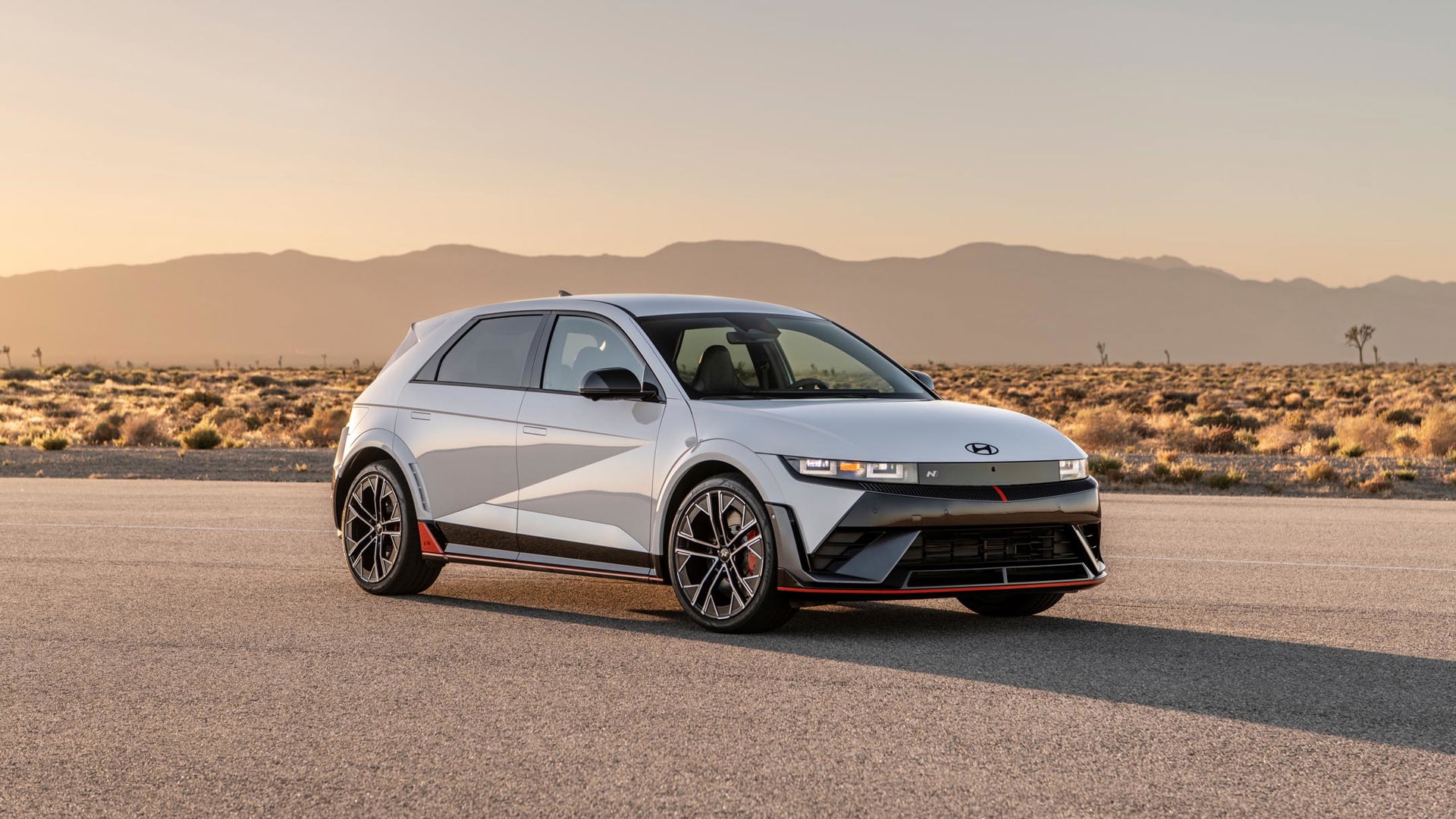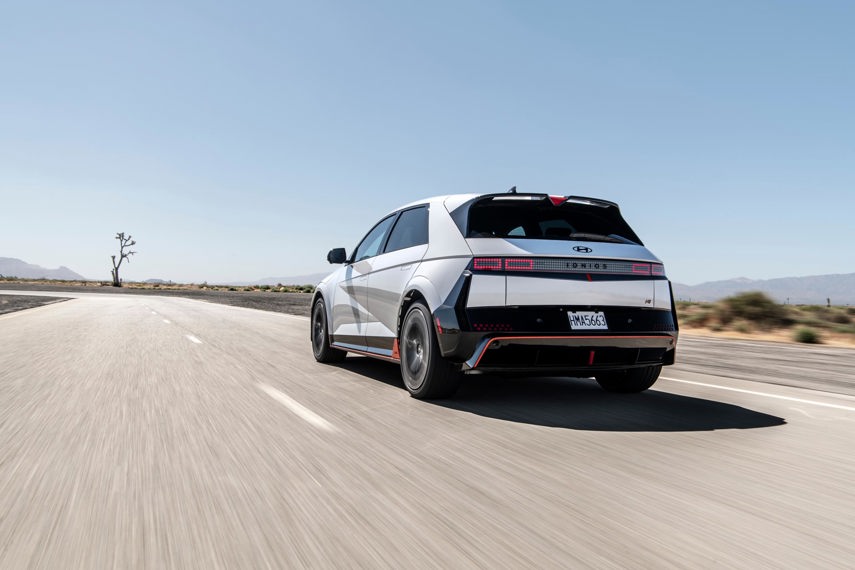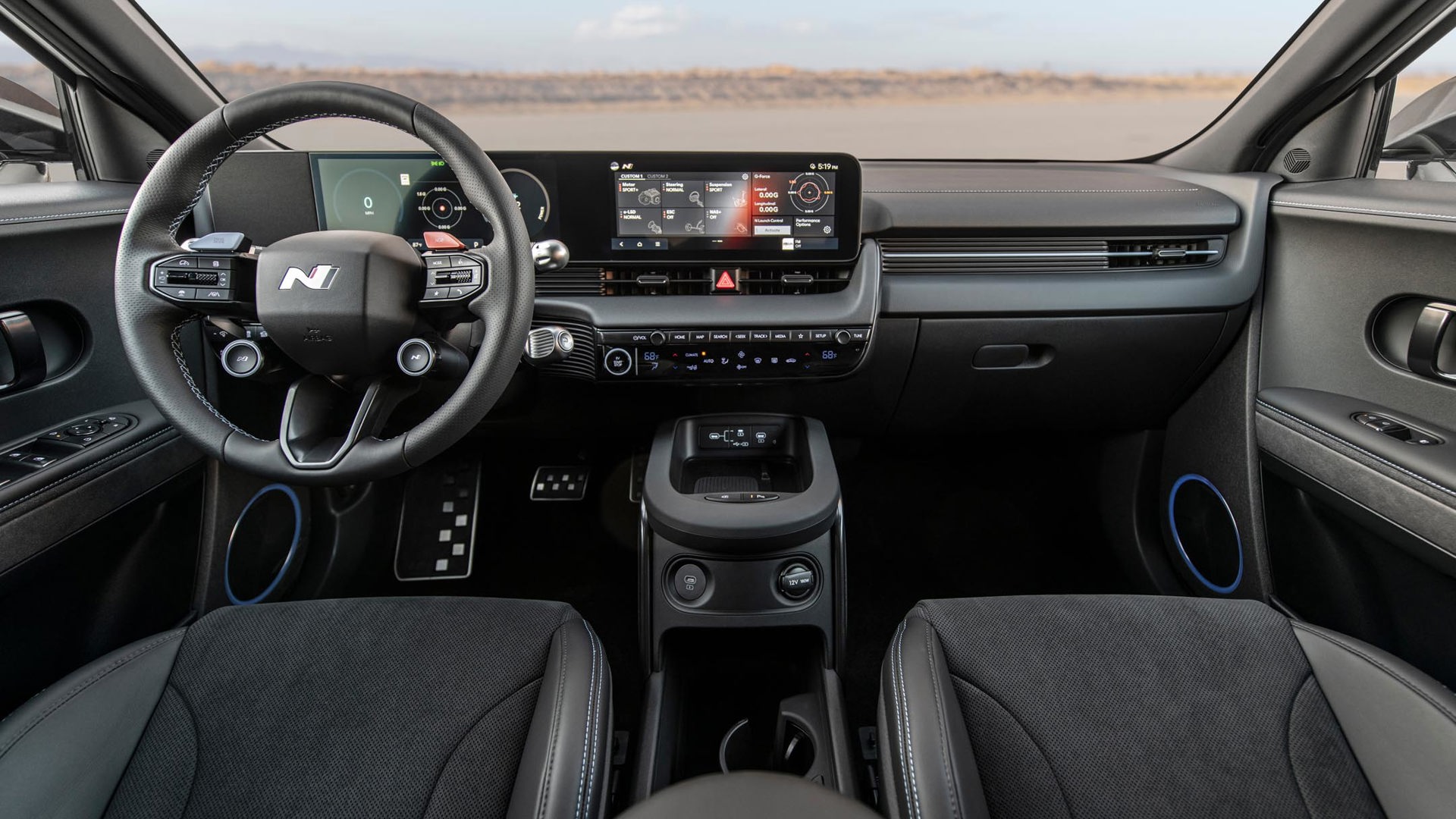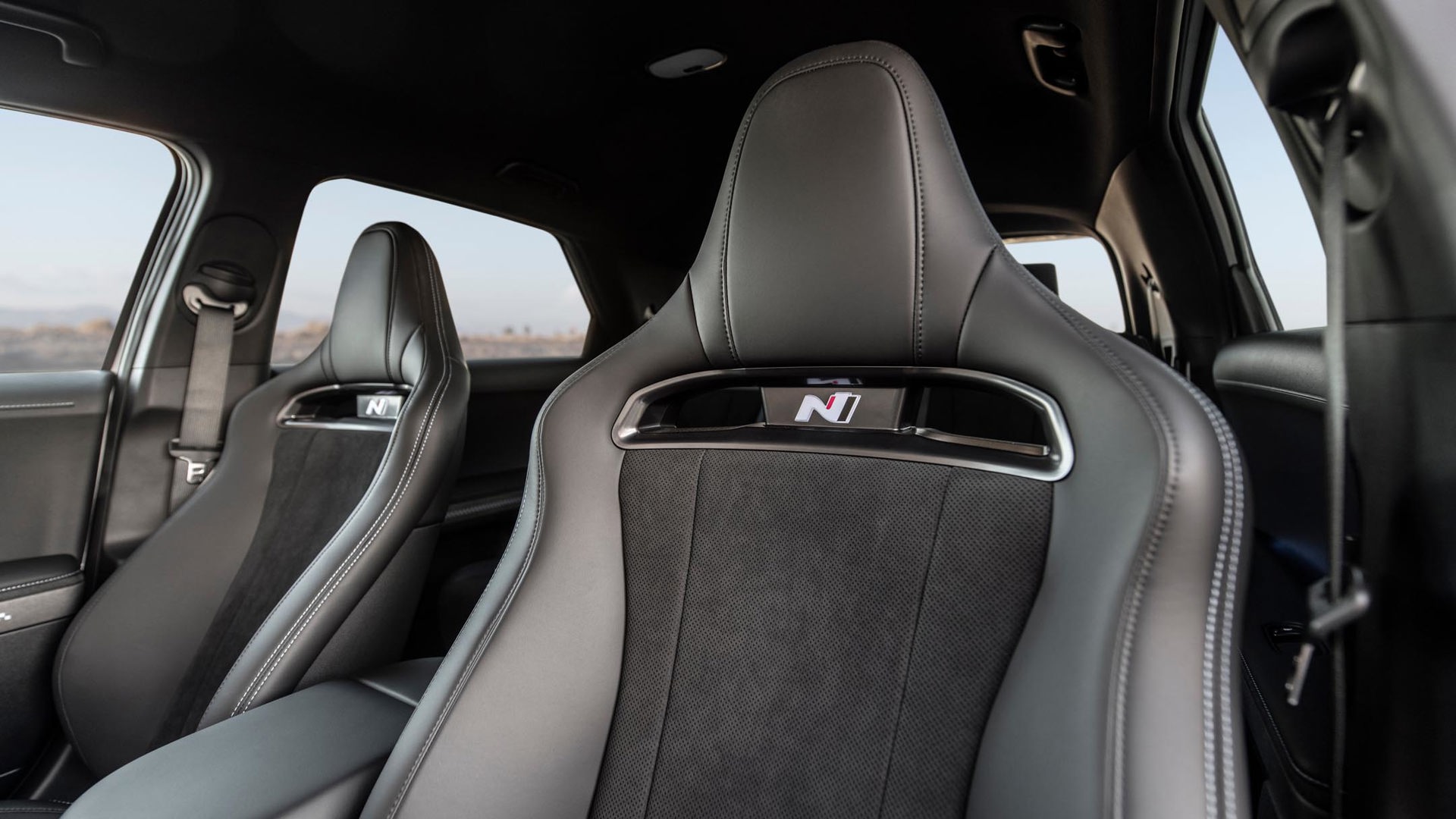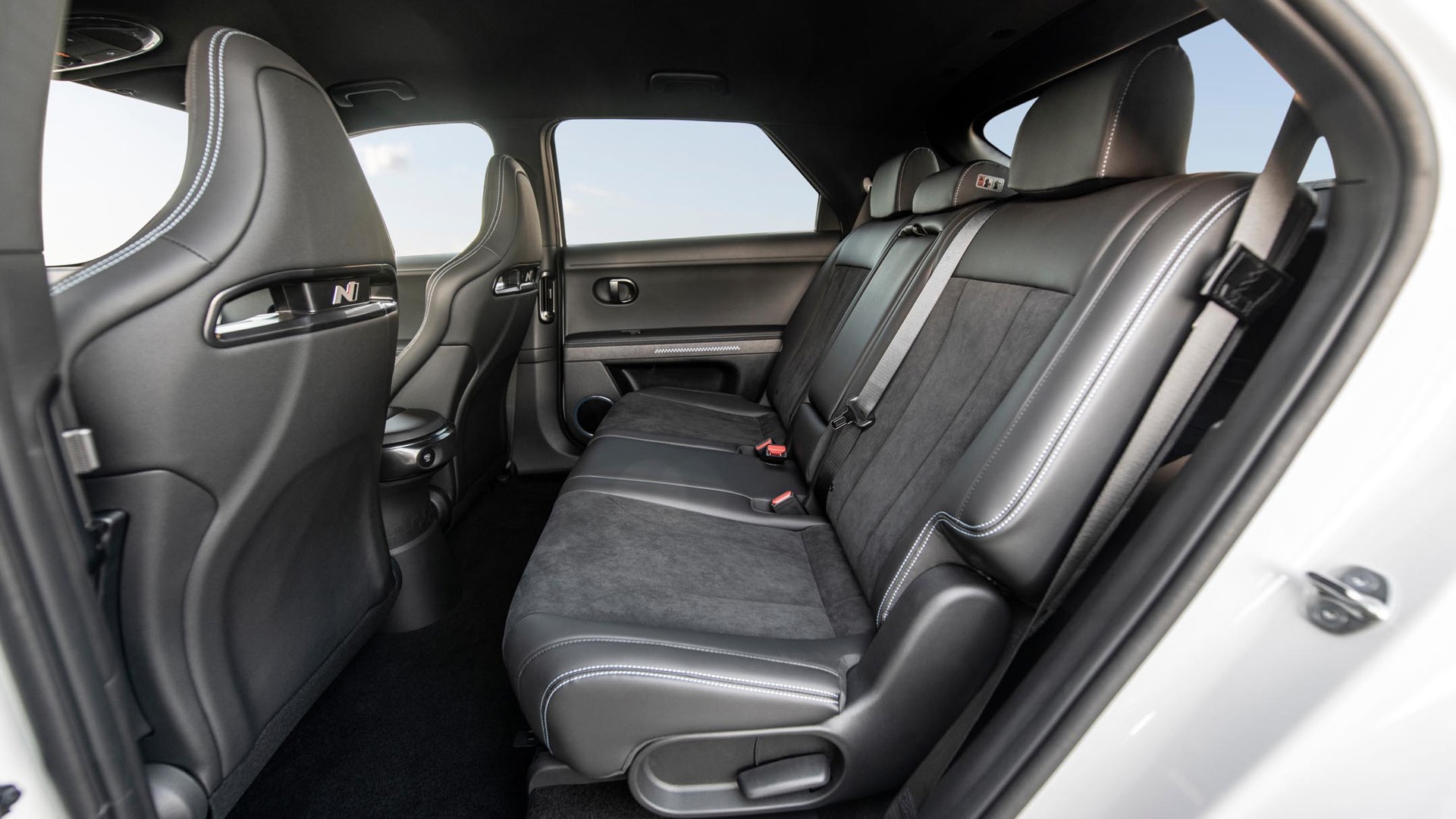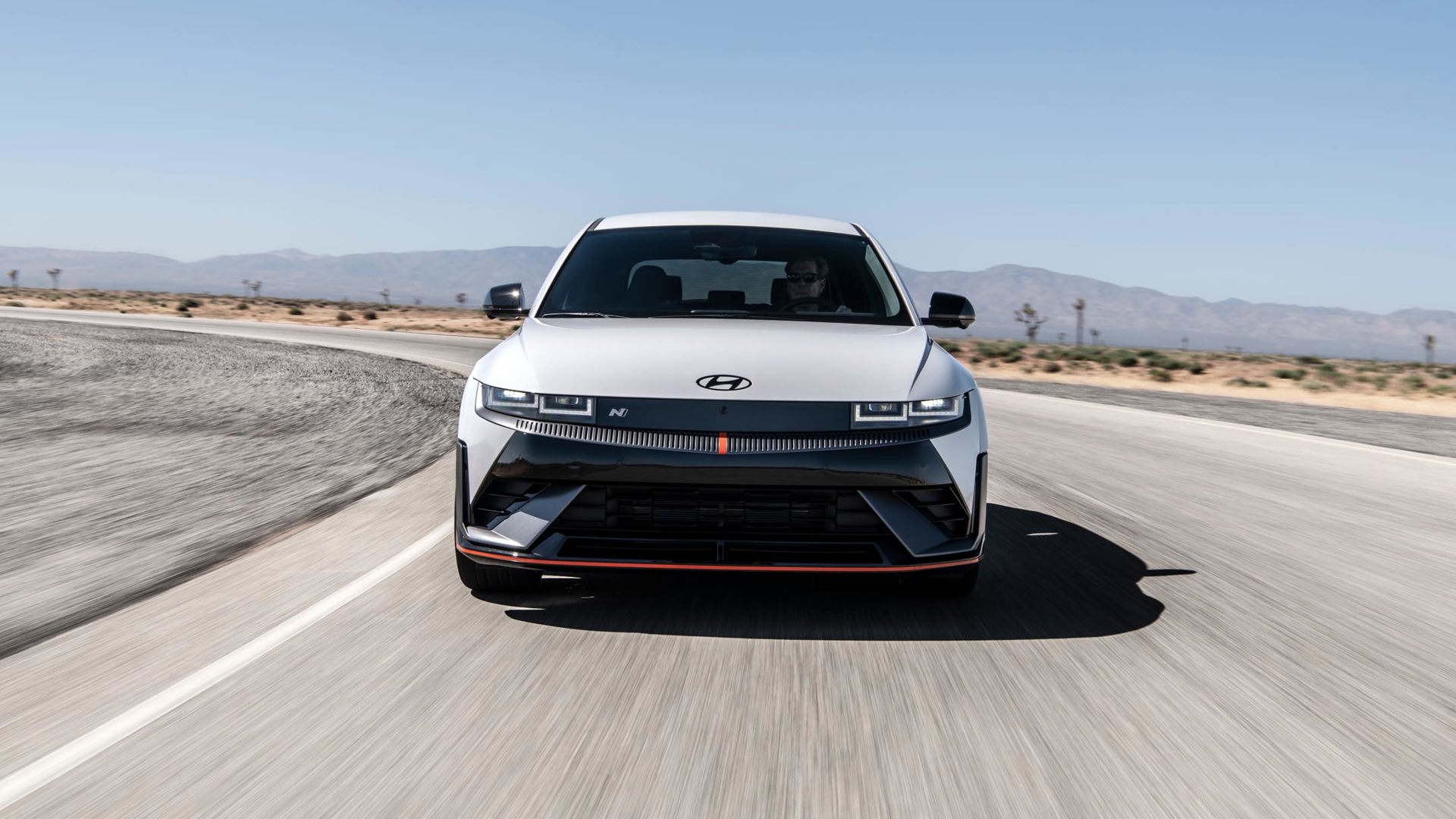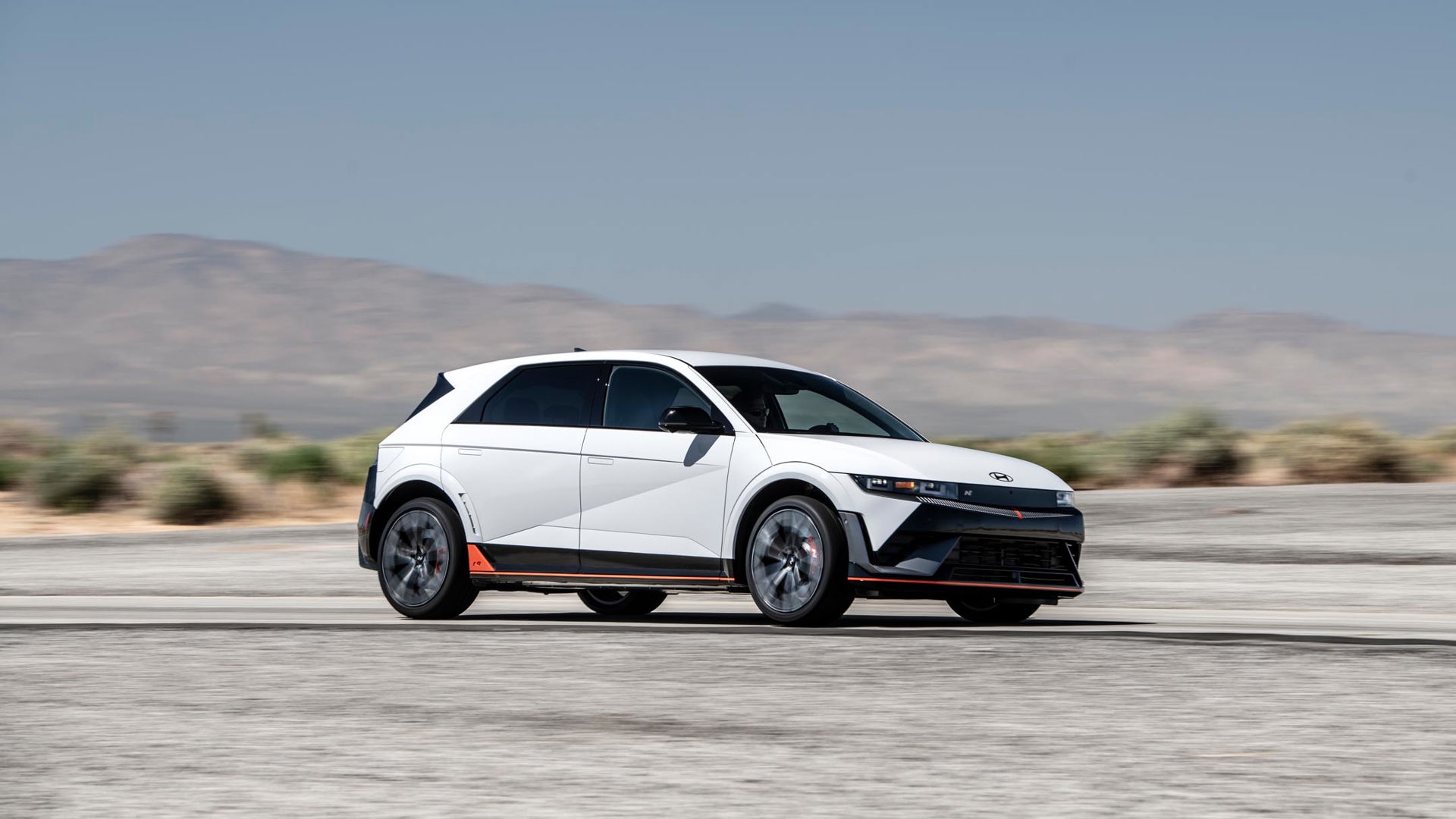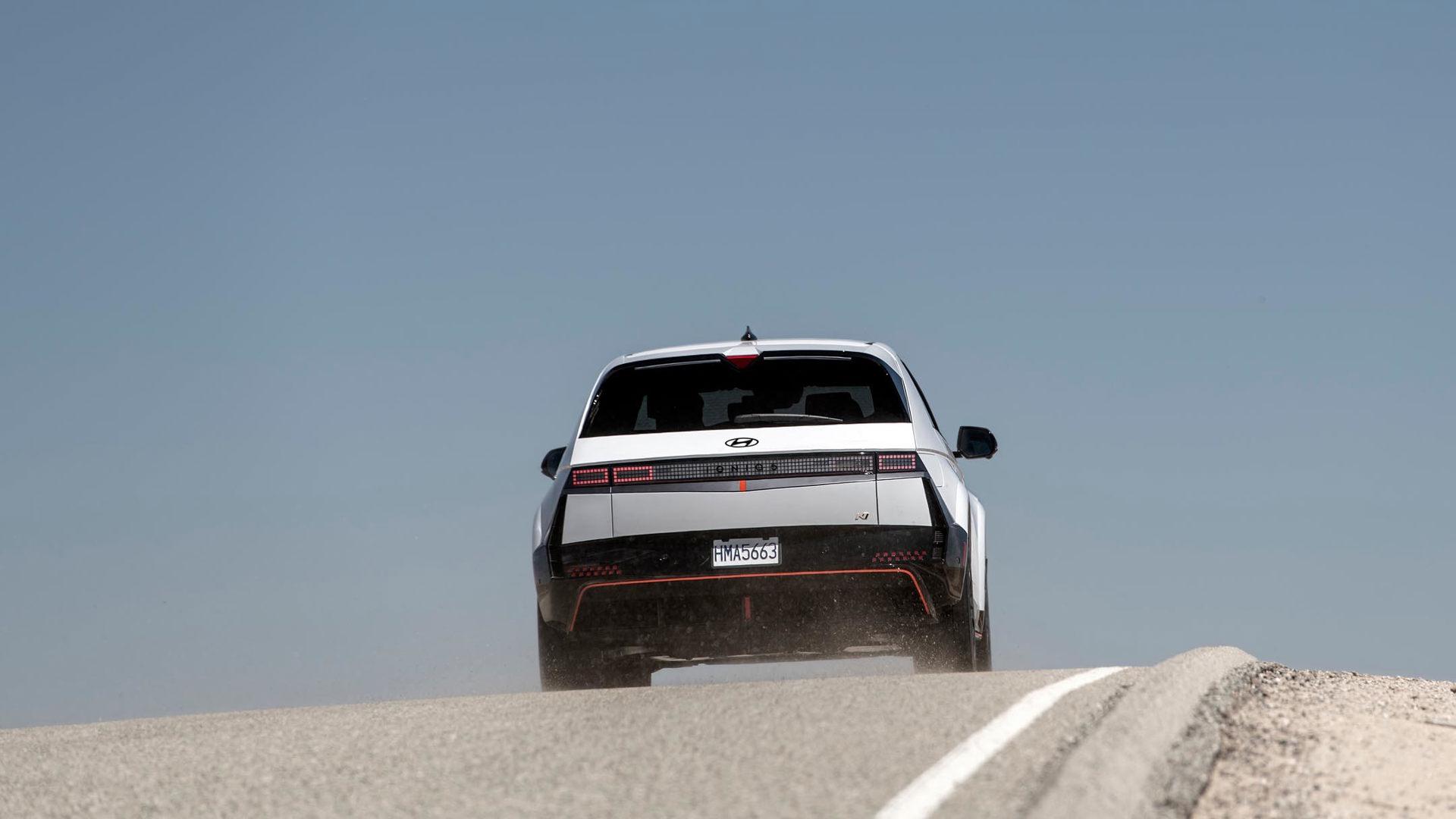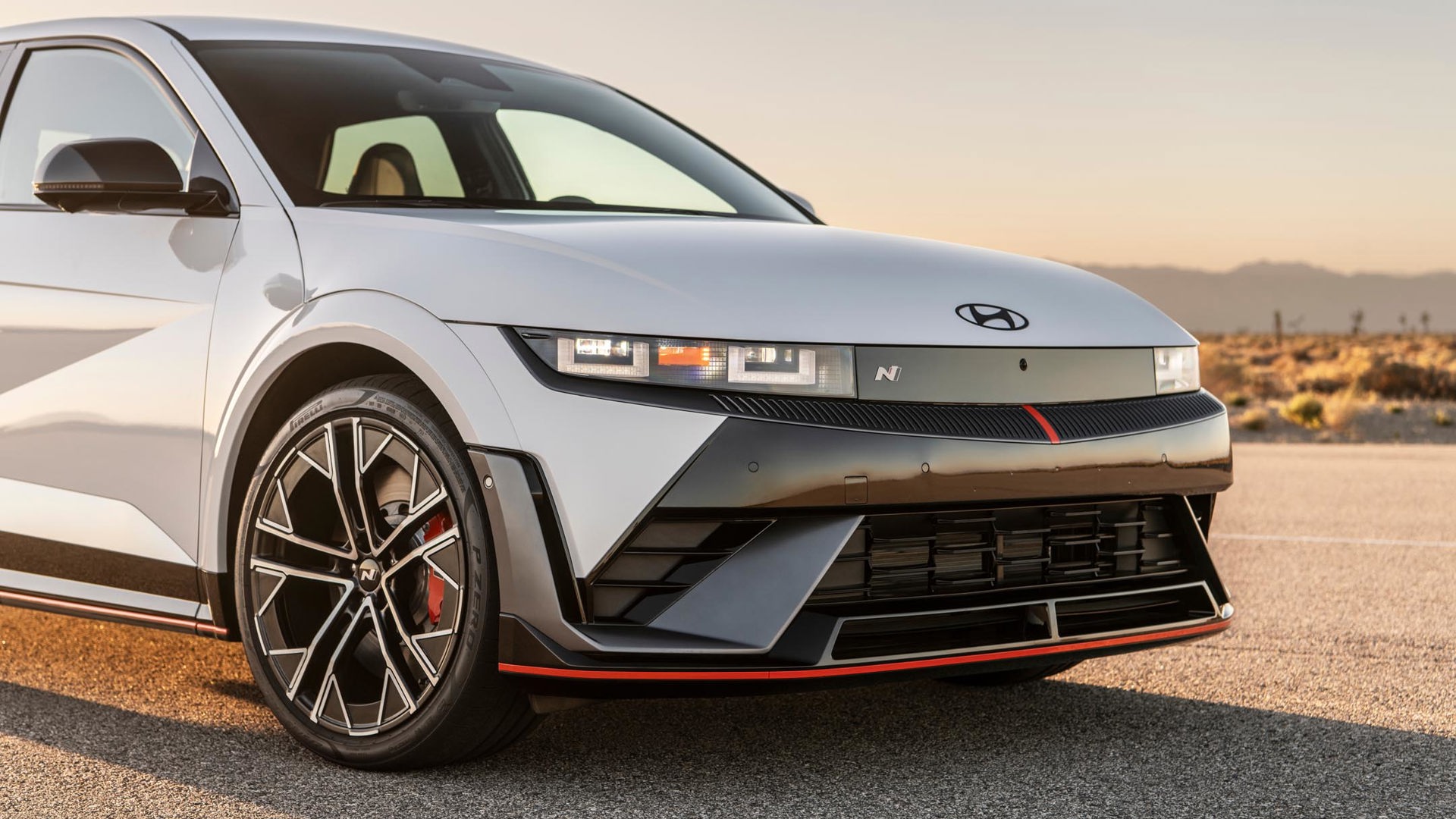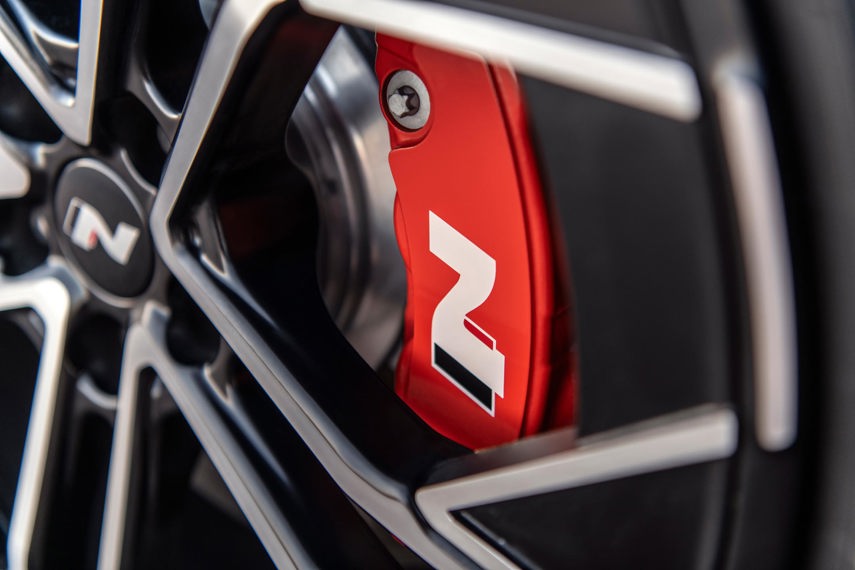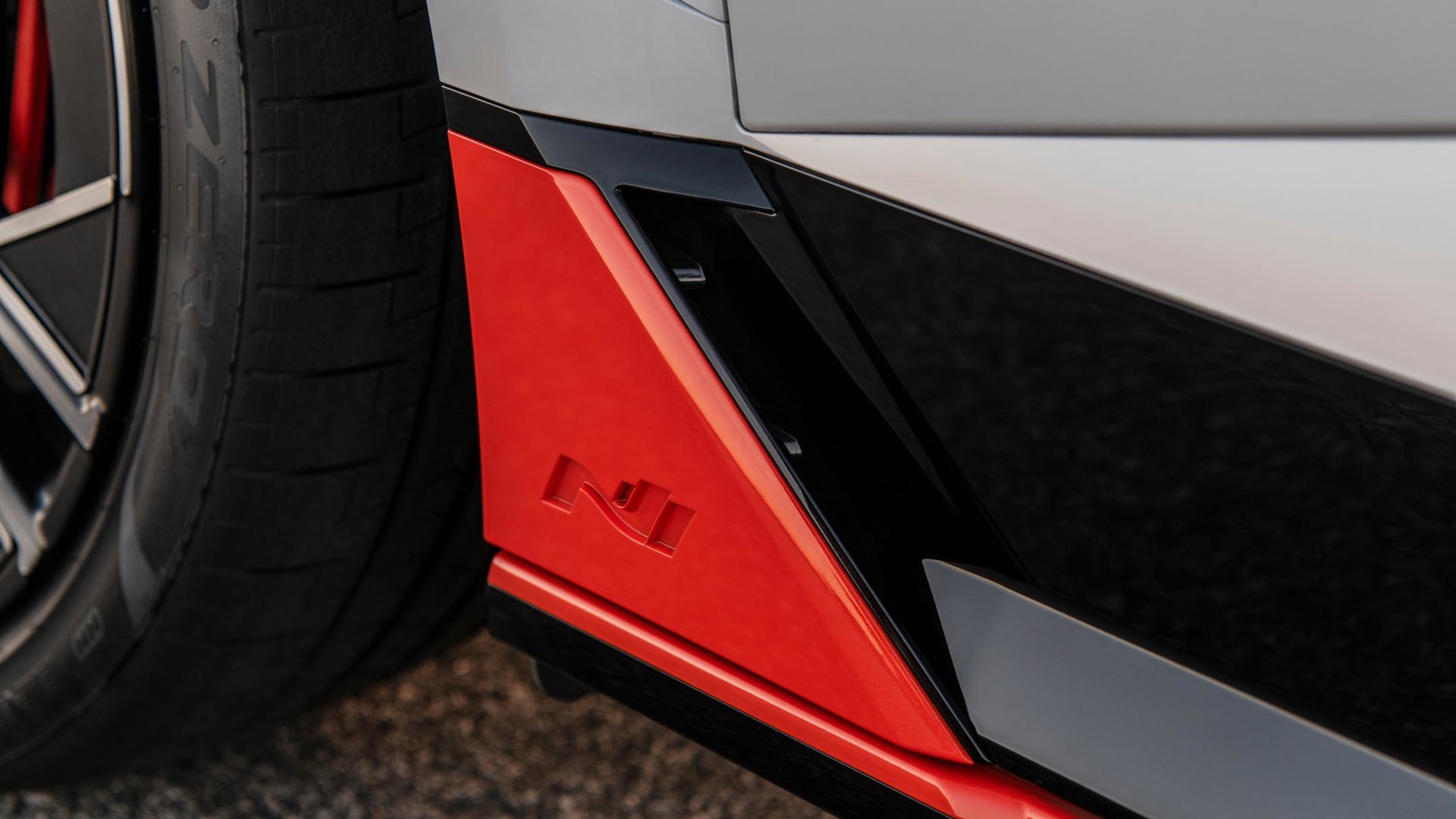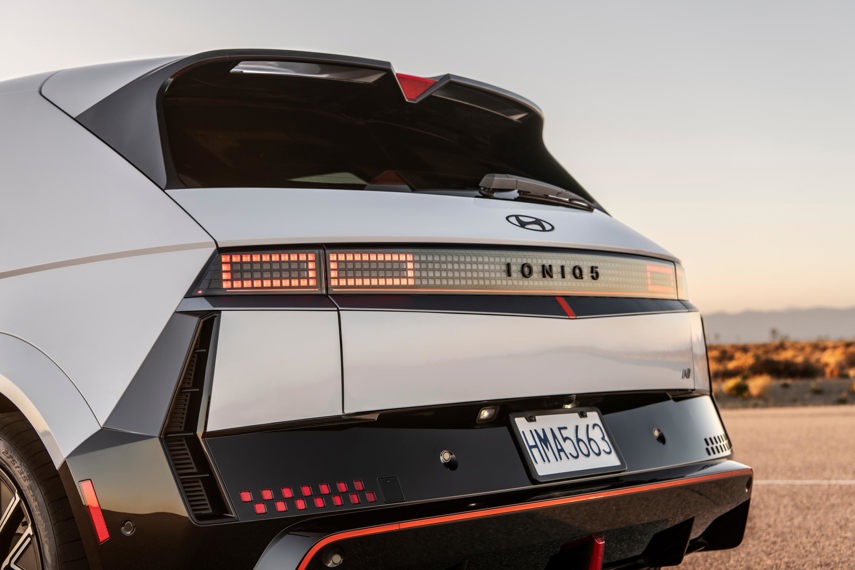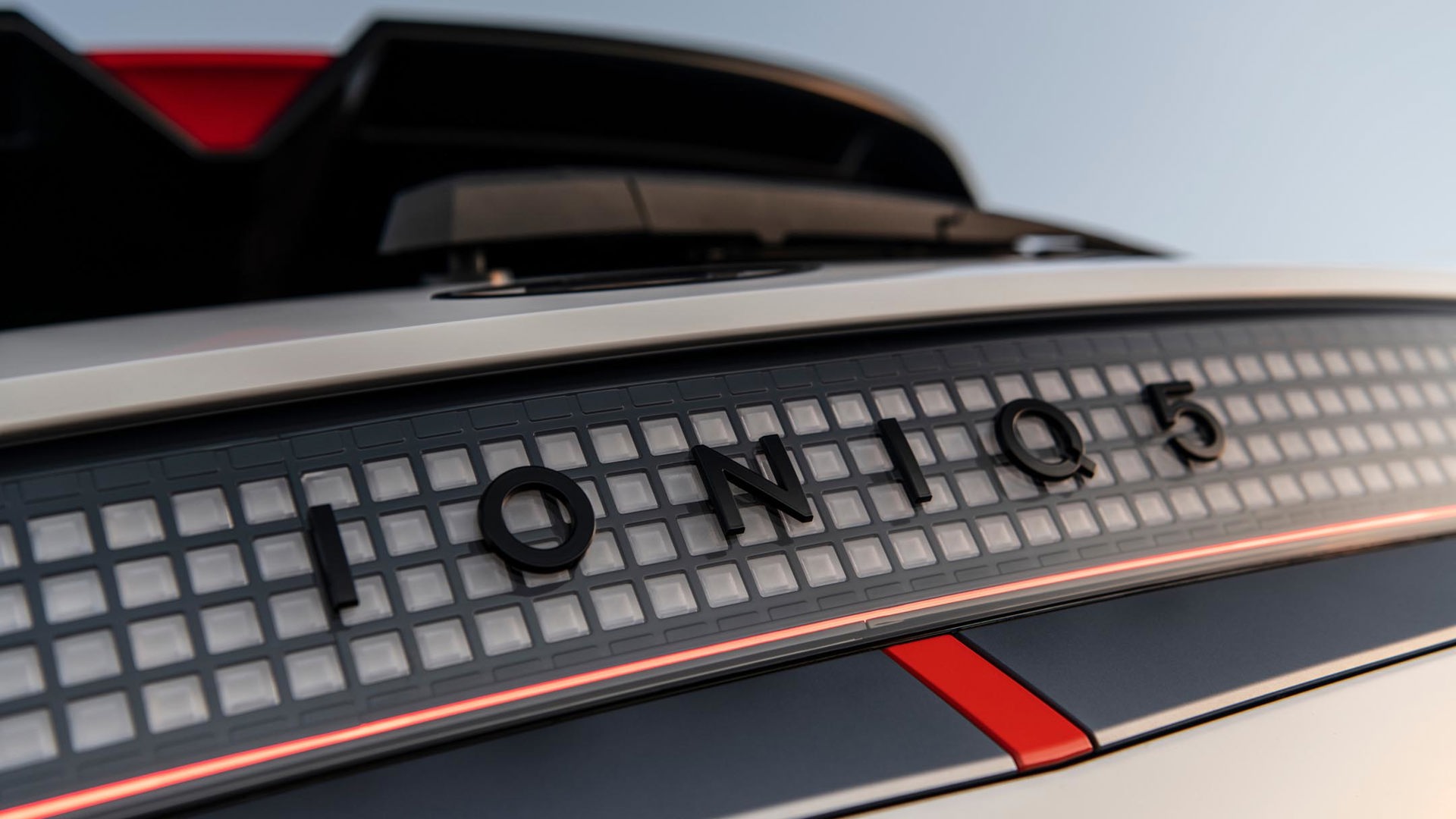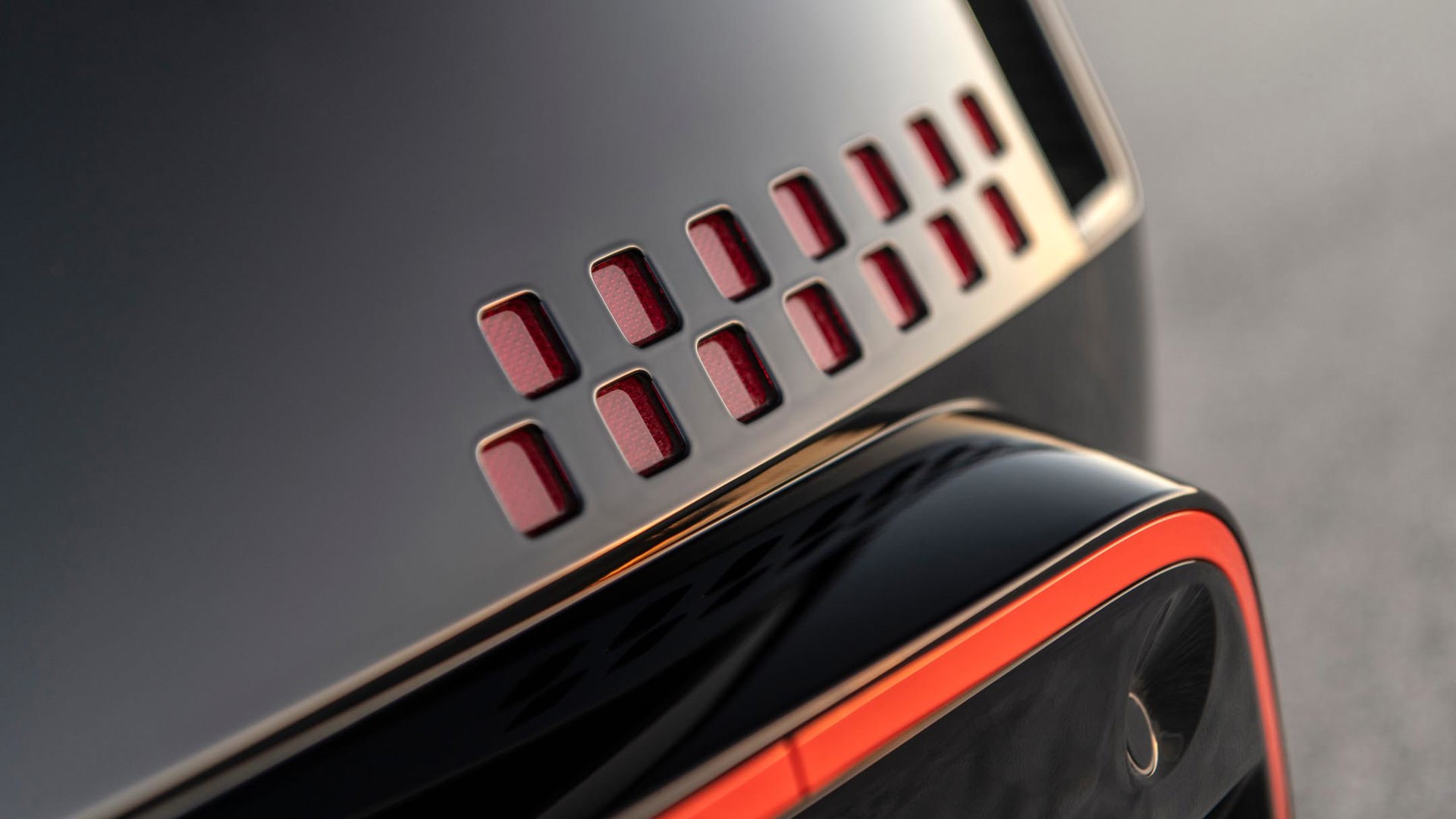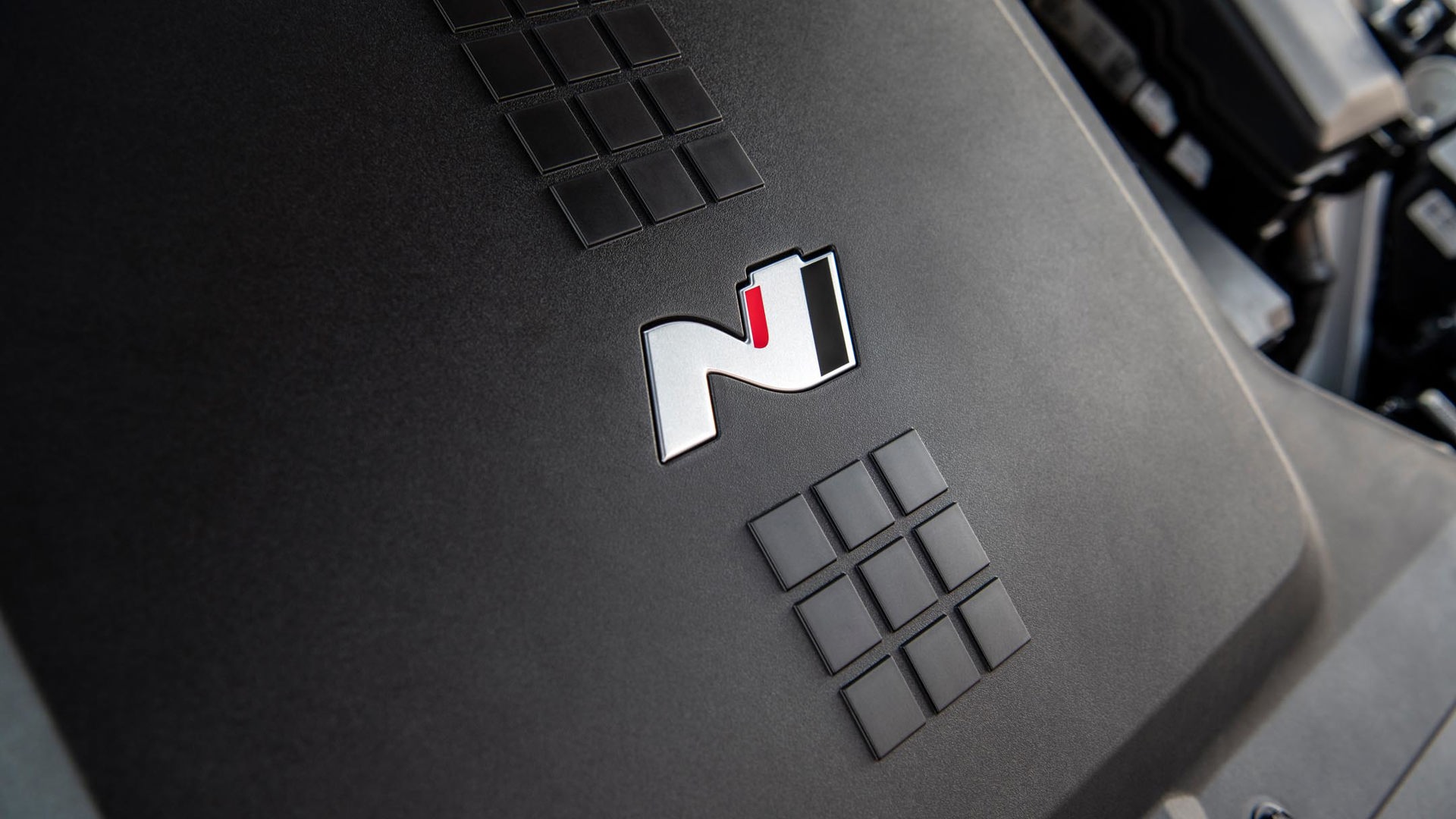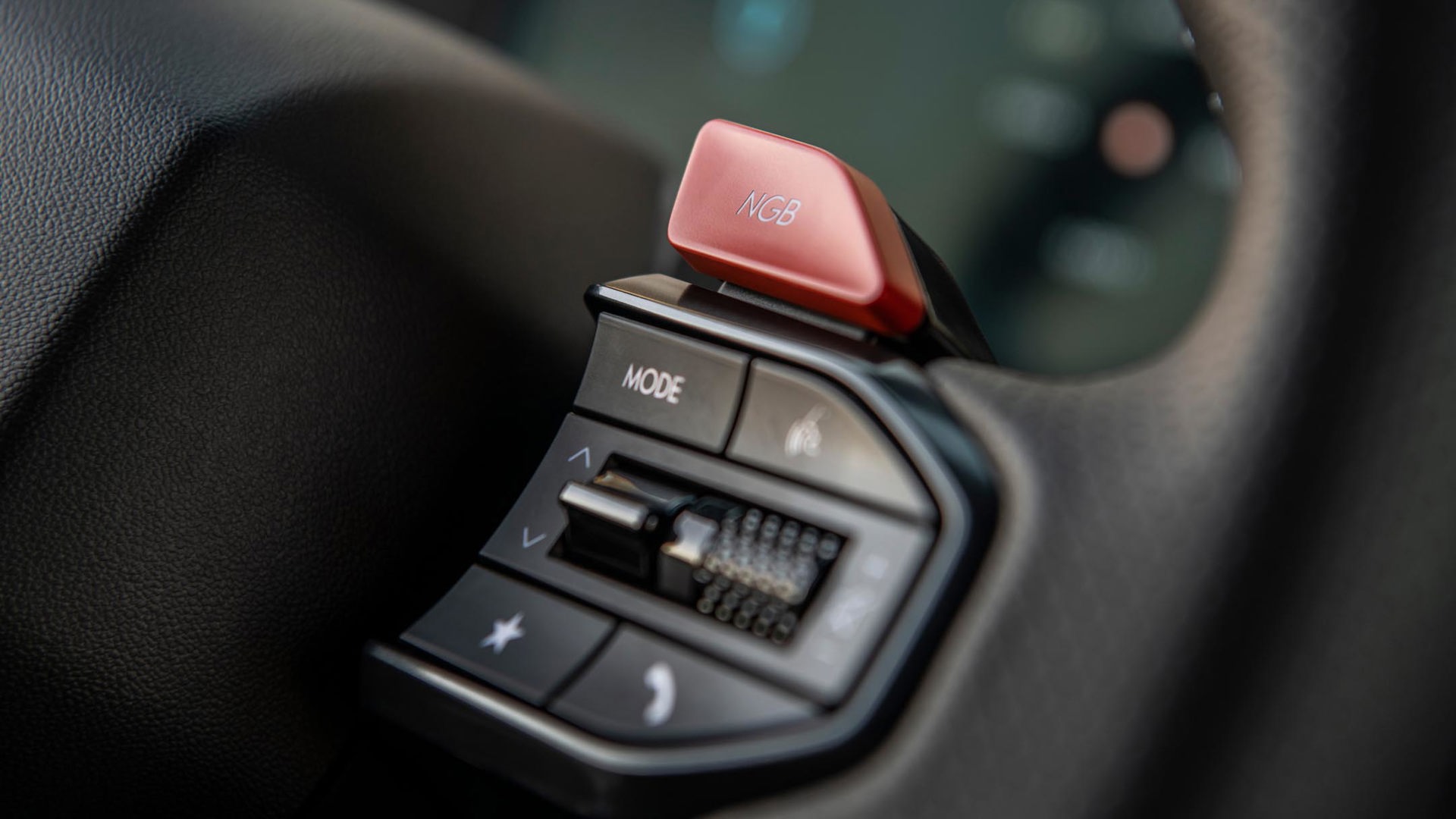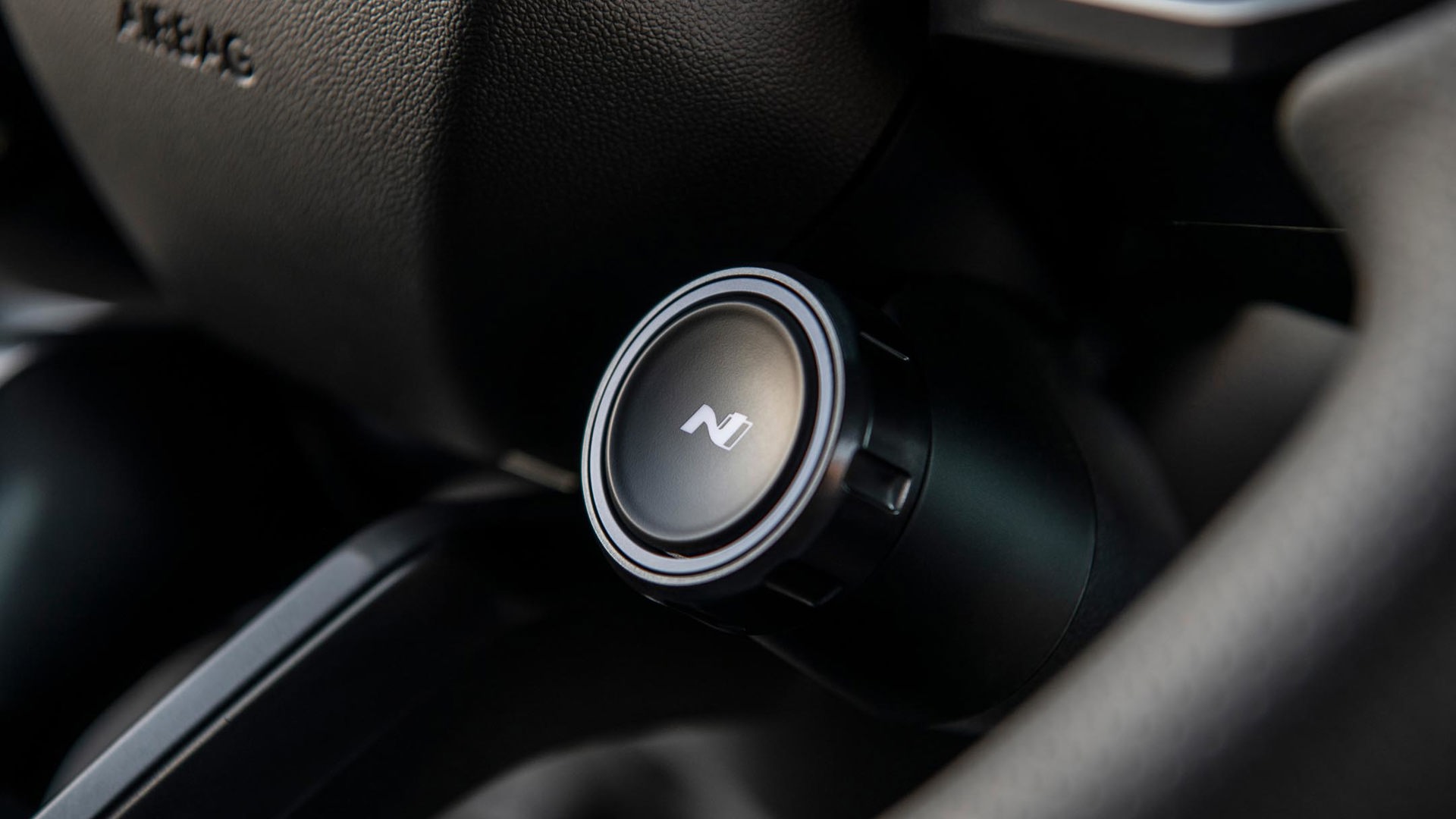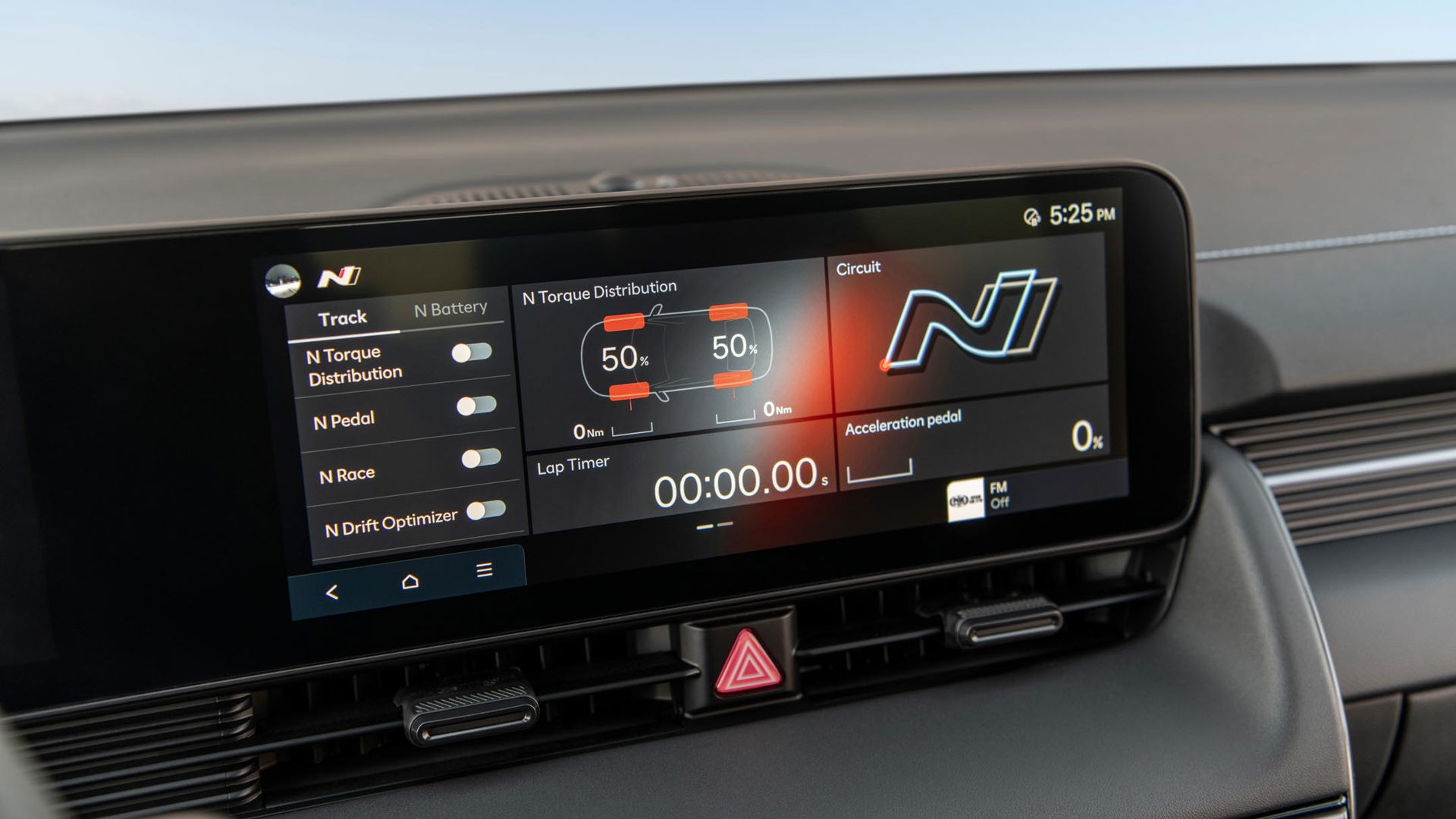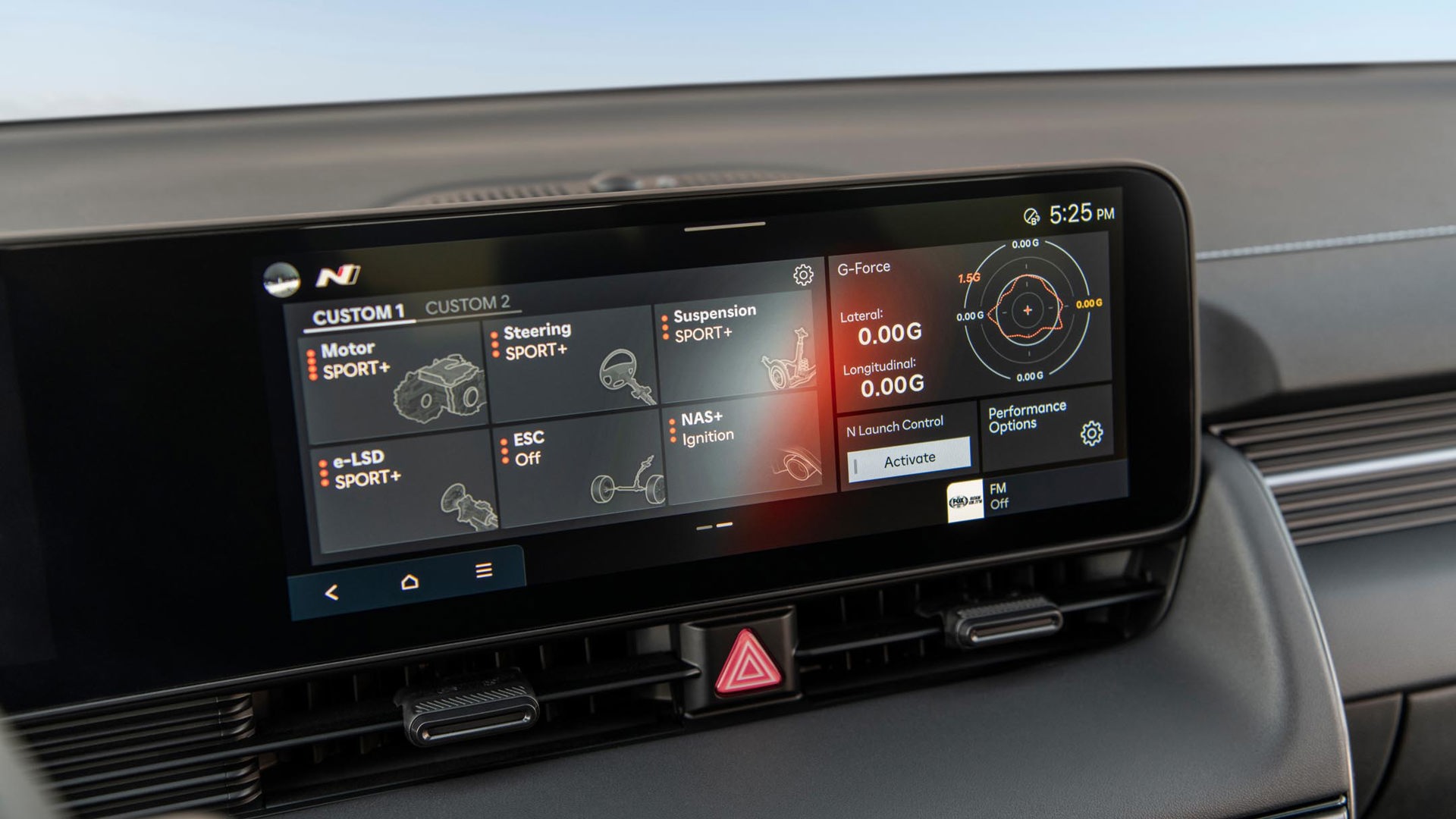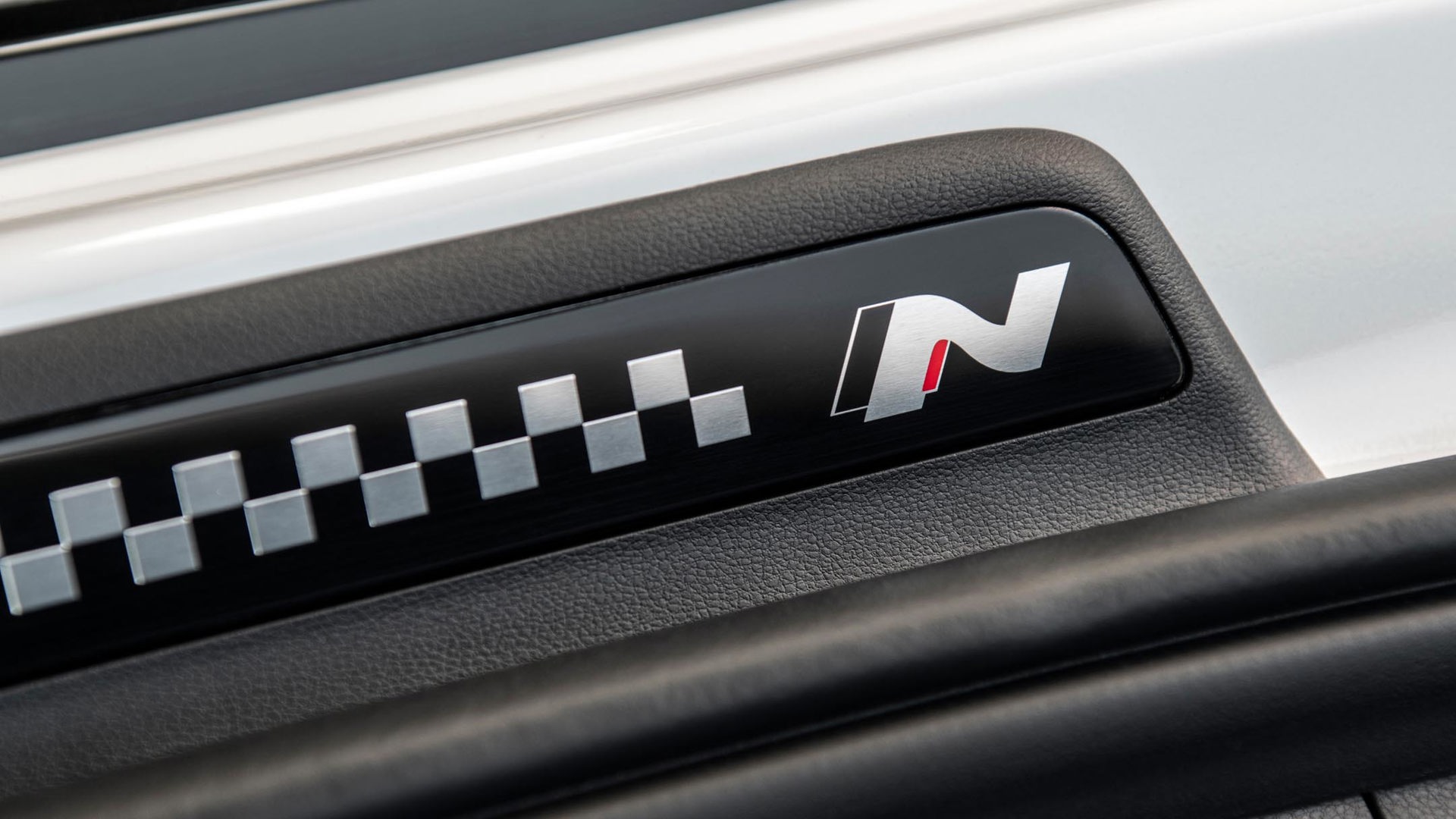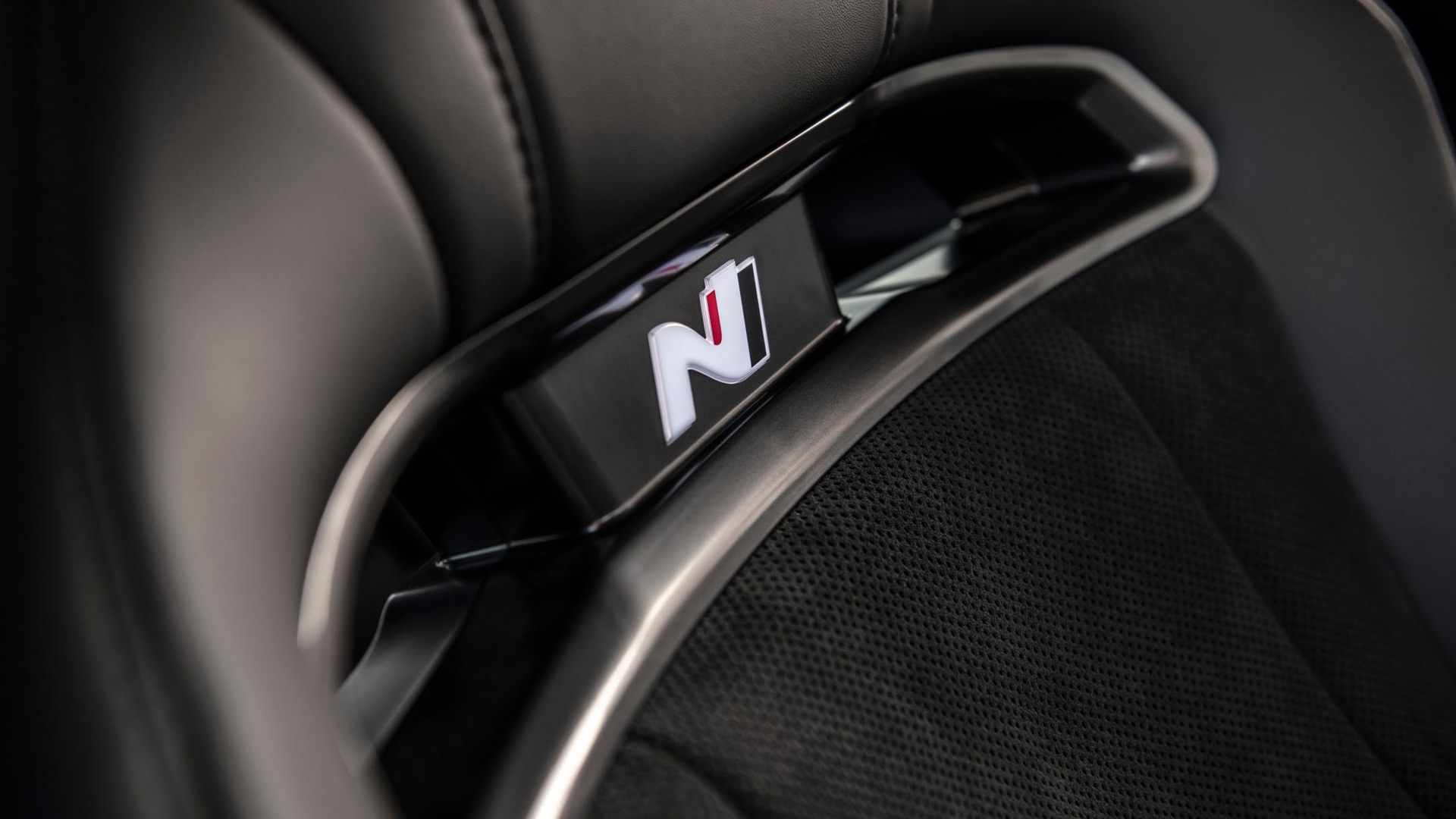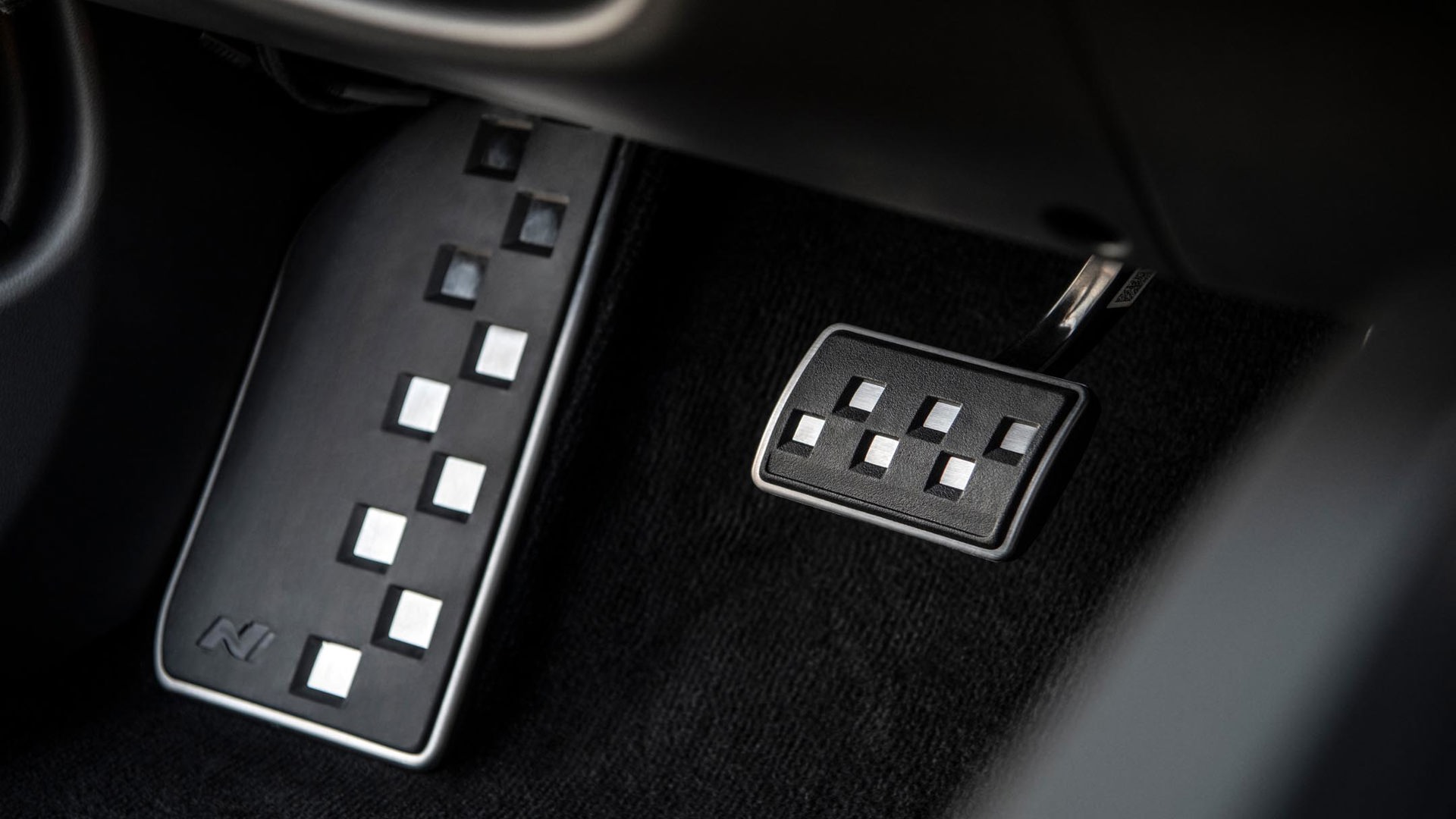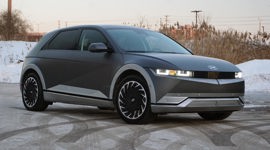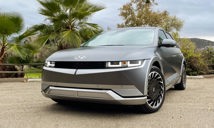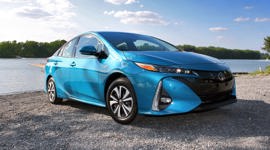The hotly anticipated 2025 Hyundai Ioniq 5 N is set to arrive with all the fury you might expect from this brand’s first proper performance electric vehicle (EV).
Set to go on sale this spring, the high-strung hatchback delivers 601 hp from its dual electric motors – a number that jumps to 641 hp and 586 lb-ft of torque when the temporary boost mode is activated. As a point of reference, the dual-motor version of the regular Ioniq 5 makes 446 lb-ft of it (to go with 320 hp).
All the Electric Goods
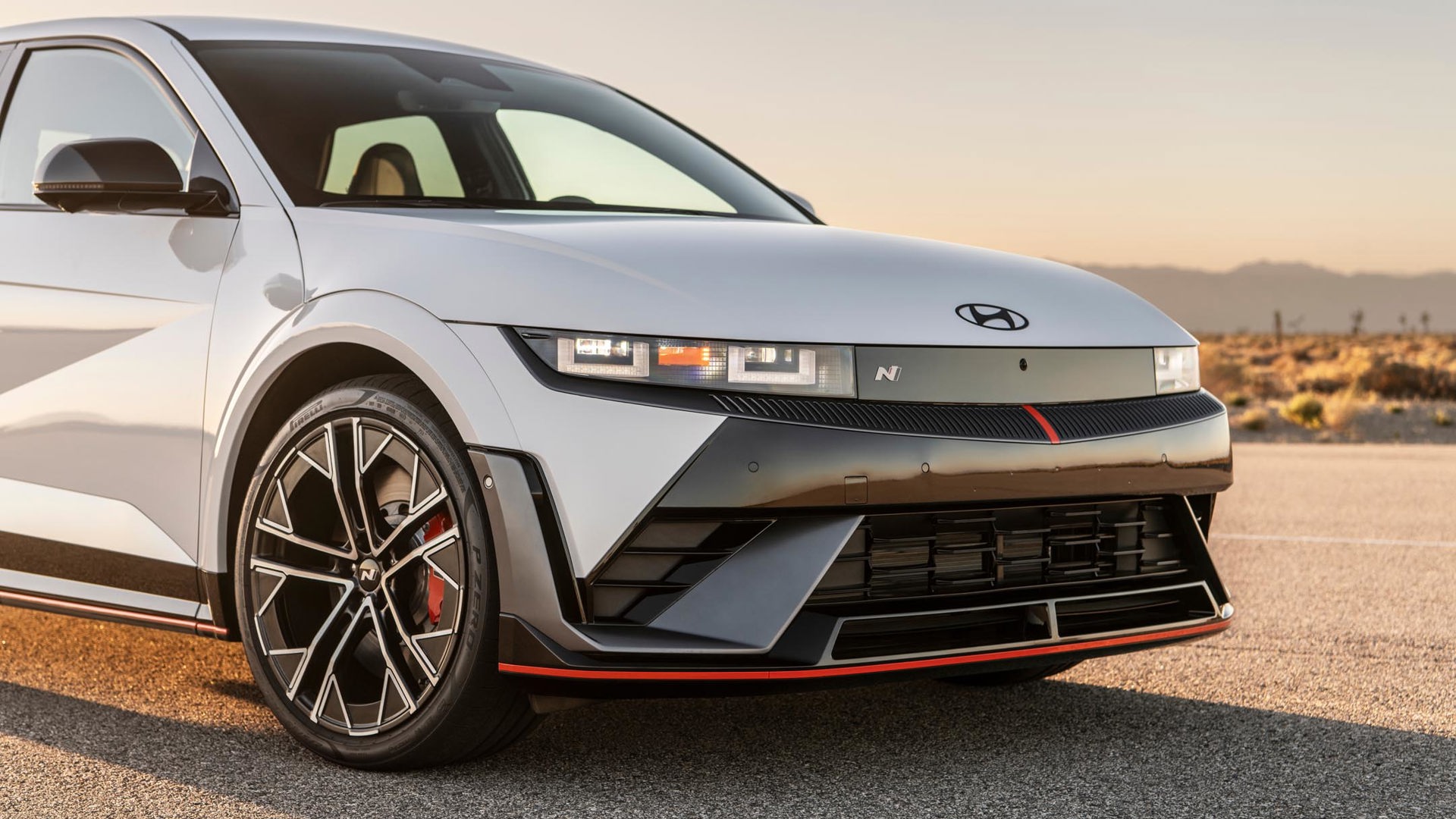
Of course, any EV can generate big numbers and be called a performance model. This being handed off to Hyundai’s N division for a thorough rework, there’s far more to the story than electrified output.
It starts with the kind of chassis reinforcements you’d expect; there are 42 extra weld points compared to the standard model, plus 2.1 metres more structural adhesive, beefier front and rear subframes, and reinforced motor and battery mounts. On top of that, the four integrated drive axles – which combine the driveshaft and wheel bearing into one unit – have been reinforced to better withstand the violent nature of electric torque.
Battery capacity has been increased to 84 kWh (versus 77.4 in the standard car), while performance-specific preconditioning optimizes the unit for high-demand situations. There’s also a slick new performance metric not seen elsewhere: in addition to lap times, lap-specific battery consumption is recorded and displayed, too.
The Ioniq 5 N also features a trick take on one-pedal driving that prioritizes cornering performance over efficiency, according to Hyundai. The principle is the same as regenerative braking: easing off the throttle leverages the electric motors to maximize the kinetic energy that’s generated when slowing down; only here, the resulting weight transfer – along with tweaked throttle sensitivity – is supposed to lead to sharper turn-in response.
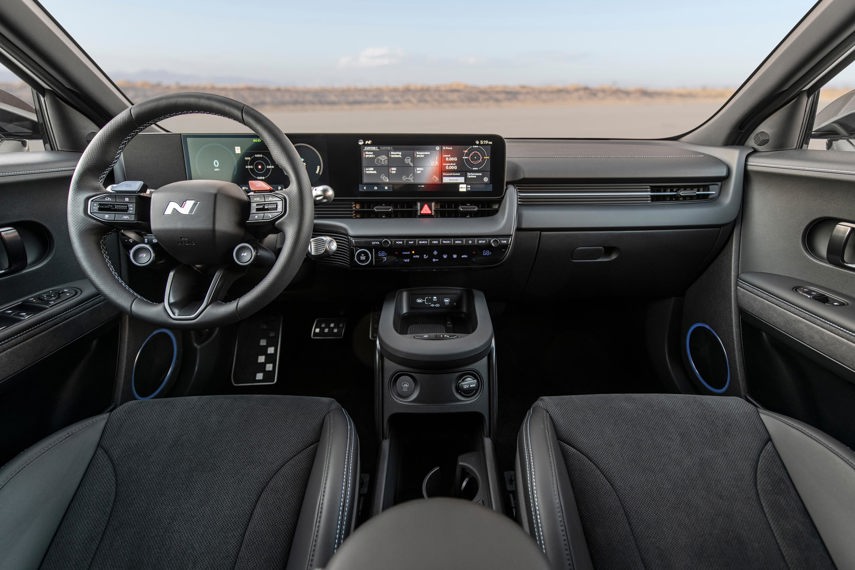
Fear not, though: true regenerative braking is along for the ride, too. And the system’s been calibrated to minimize mechanical brake fade – the enemy of endurance, especially with the extra weight an EV has to haul around. The system’s tuning is specific to the Ioniq 5 N and acts as the primary braking source, with the mechanical brakes supplementing it as required.
Those brakes are big, by the way. The four-piston front calipers grab onto 400-mm rotors, while one-piston units in the back latch onto 360-mm discs. Hyundai said it’s the most powerful braking system ever used in one of its vehicles, although it didn’t offer up specifics.
More electronic trickery exists in the so-called “torque kick drift” function – a software system that Hyundai claims can simulate the clutch-kicking action of a manual-equipped rear-wheel-drive vehicle. And then there are the electronically controlled limited-slip differentials that can be cycled through 11 different settings.
Putting Your Senses on ICE
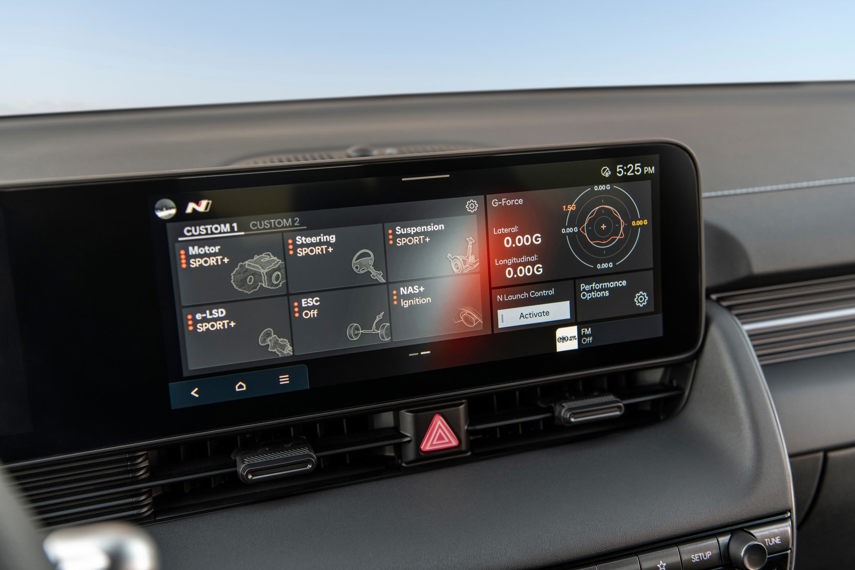
It’s no secret that the lack of sound, feel, and feedback in performance EVs remains a major drawback. Heck, we’ve written about it before, bemoaning the absence of any sort of emotional connection with what’s happening.
Hyundai knows all too well how this hampers fun, and it claims the 2025 Ioniq 5 N has a few tricks in store to address that issue head-on. The first is a system called e-shift that’s supposed to simulate the power delivery and performance of an eight-speed dual-clutch automatic transmission – the kind its N division has used in previous products, including the hotted-up Elantra and Kona models.
According to Hyundai, the system simulates the experience of a gas engine hooked up to one of those quick-shifting gearboxes by controlling torque output and mimicking the feeling of gear engagement. There’s even a subtle soundtrack that goes with it, although we’ll reserve judgment until we experience it firsthand.
Apparently, those sensory delights extend to rev-matching “downshifts,” as well as fake ignition and exhaust noises. They rely on a 10-speaker stereo – eight in the car and two outside it – to simulate the sounds of a four-cylinder gas engine, while other noises are inspired by the likes of fighter jets and more.
The Essentials
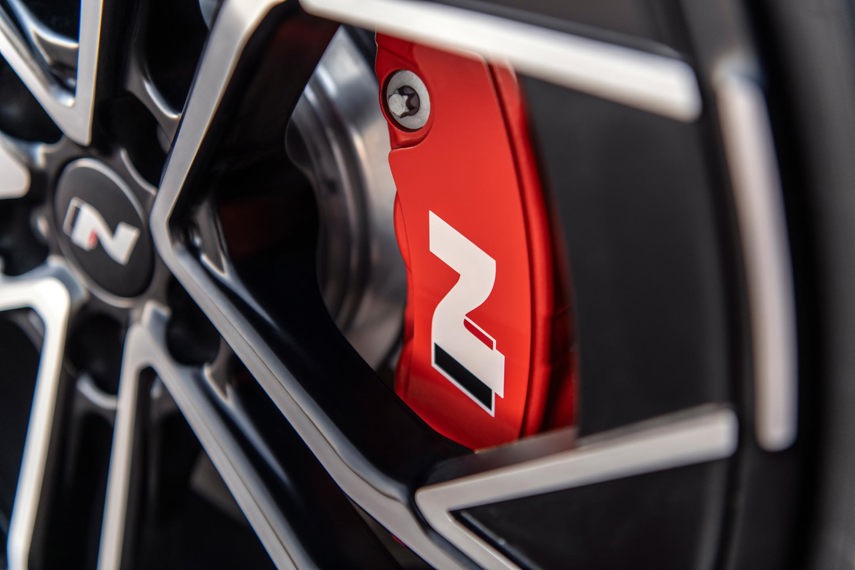
Beyond all the fancy EV-specific stuff, the Ioniq 5 N features old-fashioned performance upgrades. The tires are sticky Pirelli P Zeros that measure 275 mm (10.8 in) wide and wrap around 21-inch forged aluminum wheels. There’s also an electronically controlled suspension setup that’s similar to the one the related Genesis GV60 and performance-focused Kia EV6 GT both use, although tuning will undoubtedly be model-specific.
Looking the Part
This being a full-fledged N product, the hotted-up Ioniq 5 has all the visual cues and clues you could want. It rides 15 mm (0.6 in) lower than the non-performance version, thanks in part to its upgraded suspension, while the body’s a bit wider to fit the massive tires.
Up front, the blacked-out bumper treatment makes this hatchback look menacing, while there’s a classy colour-matched spoiler that extends from the top of the roofline and comes complete with the N signature triangular third brake light. Lower down, the diffuser in the bumper features a subtle reflective black checkerboard pattern – a play on the pixel design in the lights.
It’s all a little more subtle inside, with slate blue accents set against black surfaces, and a smattering of N logos here and there. The seats are specific to this version of the Ioniq 5, plus they sit a little lower than the regular car’s; and there’s a fixed centre console instead of the power-sliding unit elsewhere in the lineup. Otherwise, a few buttons and switches are all that hint at what’s hiding under this Hyundai’s angular sheet metal.
Final Thoughts
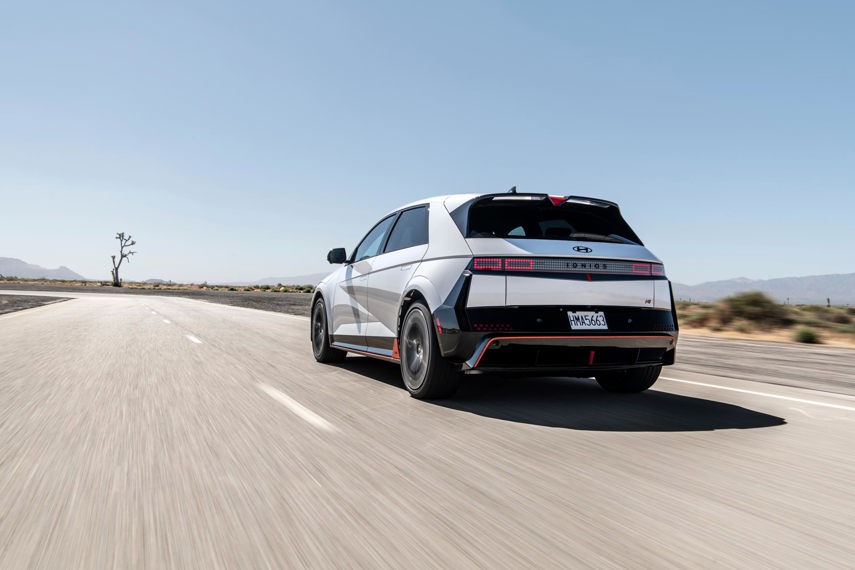
There are still some key details missing from the equation here, including how much the 2025 Hyundai Ioniq 5 N will cost when it goes on sale next year, and how far it can go on a full charge. But there’s no question Hyundai came prepared with its first performance EV. If it can manage to elicit the kind of emotional engagement that’s currently missing from electric motoring, you might just be looking at a generation-defining car.
